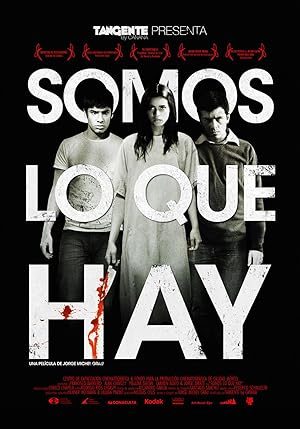Somos lo que hay or We Are What We Are may be a horror film in spirit, but it is more effective as a Mexican socio-economic historic treatise against the daily horrors experienced by the invisible masses. Who are the invisible masses? They are women, homeless children, poor people, elderly people, mentally disabled people, homosexuals, sex workers. We Are What We Are emphasizes in the opening scenes how quickly any ugliness, regardless of the scope, can be erased from modern life, and the inefficiency of bureaucracy for anyone but the leisured classes who wander the malls. When the movie begins, it feels like we have interrupted a story already in progress, but how far back does it start? Is it just a single delusional family like Dogtooth or does this story have its roots in a grand Aztec past kept alive by a desperate few? The latter explains why the family does not want to sacrifice anyone that they see as unworthy of the honor-the sacrifice could be an honor to a god or the gods sacrificed themselves so humanity could survive. It is not a coincidence that the family is initially reluctant to sacrifice someone familiar out of contempt. It also explains how the daughter suddenly has information though she never communicates with anyone outside of her family. The true horror may be how the invisible masses must feed on each other or fight amongst themselves in order to survive, but eventually that survival may be extinct-another byproduct of colonialism. Somos lo que hay or We Are What We Are is an ambitious, but flawed movie. Though it is the director’s intention for the family to be largely ine





